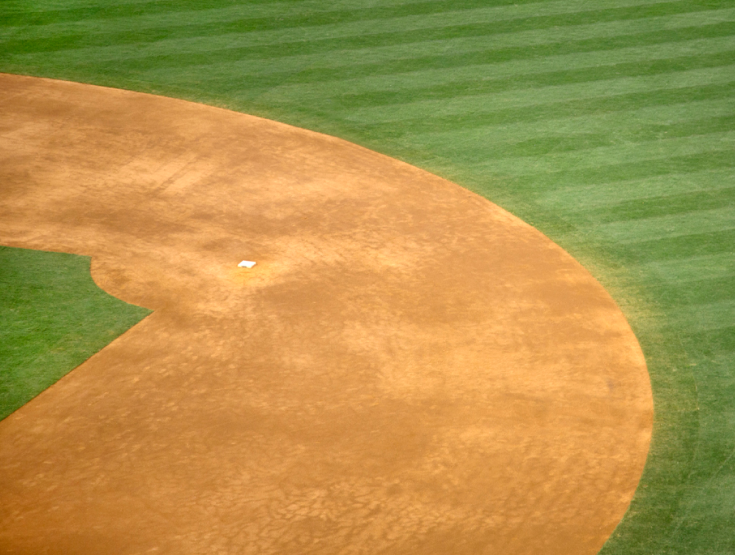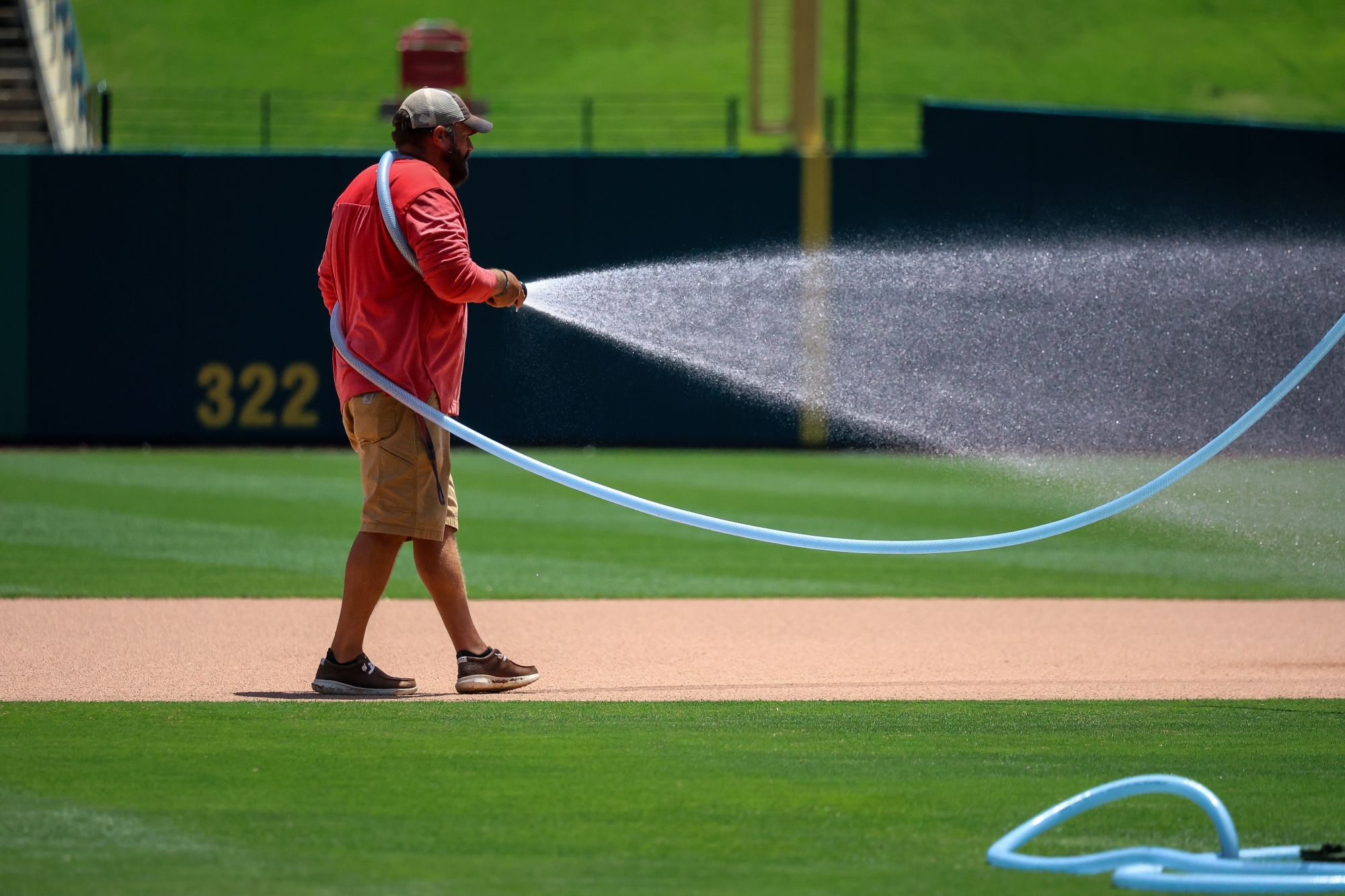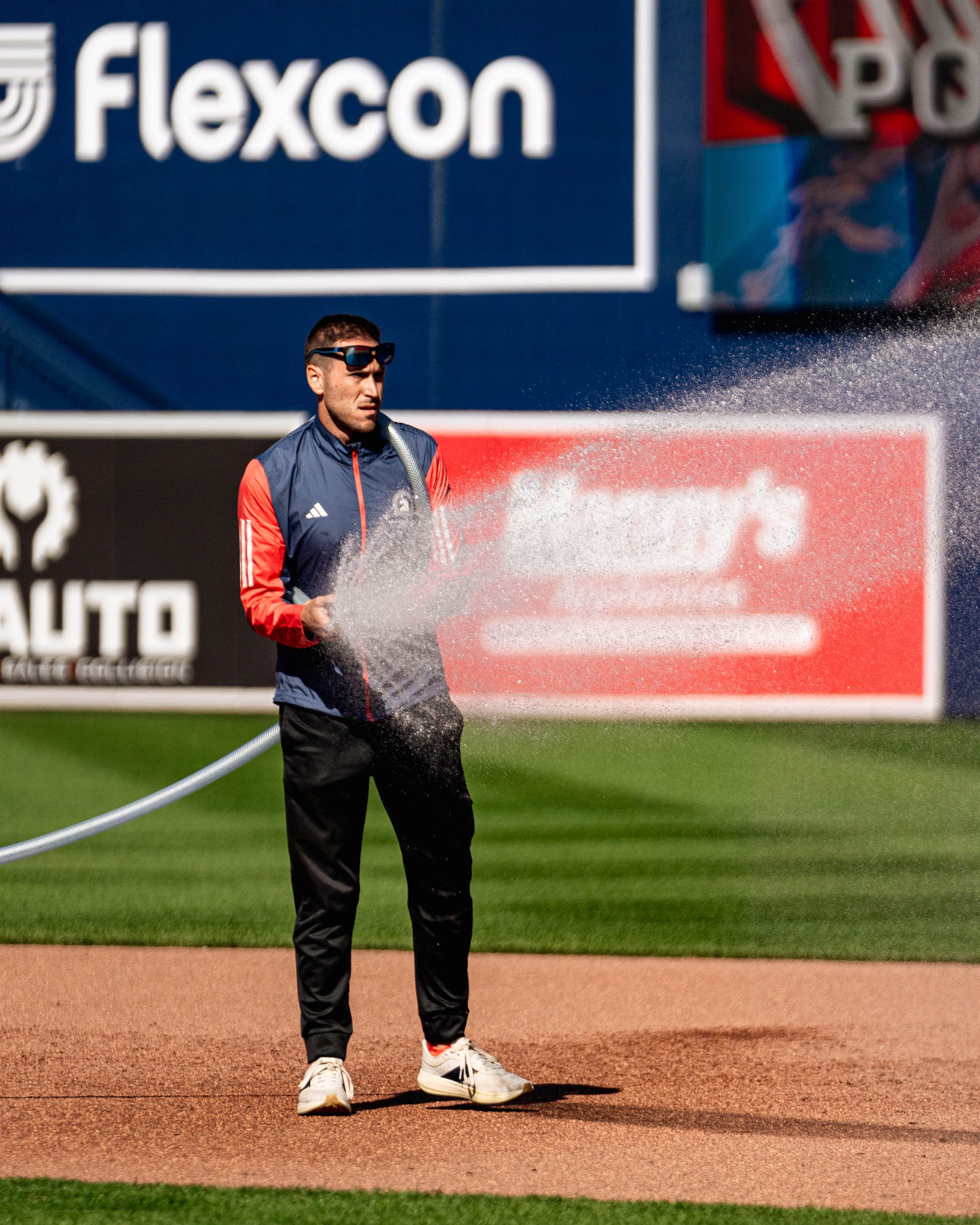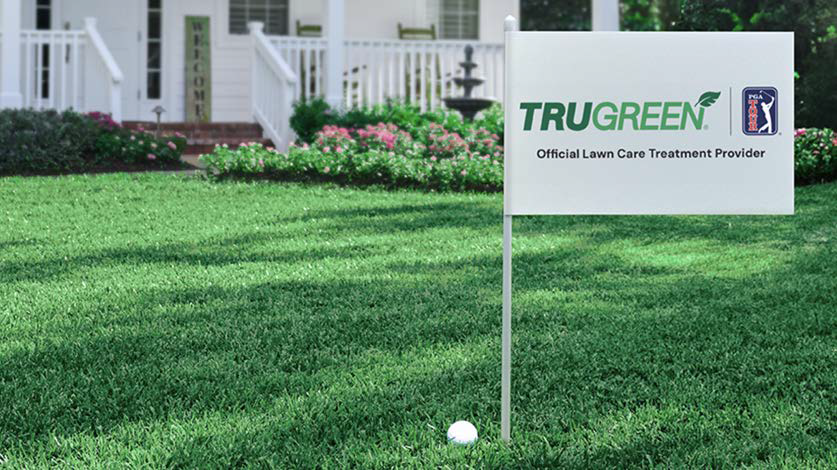4. Water Wisely
“We water anywhere from 10 to 30 minutes depending on what part of the field it is. We look at field conditions, dew point, humidity, weather reports and when the team needs to go on the field.” - Ryan Lefler, Polar Park
Rainfall is your lawn’s best irrigation system, but sometimes mother nature doesn’t cooperate. That’s when the pros use data to determine how much and when to water. You may not have all the same tools a ballpark does, but there are a few key things to remember when it comes to watering your lawn.
Best practices for watering your home lawn:
- Water early in the morning (4-8 AM is ideal).
- Aim for 1 inch per week, including rainfall. Deep, infrequent watering is better than daily sprinkling.
- Use rain gauges and monitor humidity and dew point.
- Avoid nighttime watering to prevent fungal diseases.
Pro tip: For new lawns or overseeded areas, increase frequency until grass is well established.
5. Give Your Lawn a Break
“Grass grows by the inch but dies by the foot. So, limit the amount of foot traffic on it.” Tylor Meppelink, AutoZone Park
Constant foot traffic can wear down even the healthiest grass. From kids playing to pets running to weekend BBQs, over time, heavy use compacts the soil beneath the surface. This makes it harder for water, air and nutrients to reach the grass roots.
The result? Thinning turf, bare patches and a lawn that struggles to stay green and resilient. Giving your lawn a rest, rotating high-traffic areas or creating designated walkways or paths can go a long way in maintaining its health.
Lawn Recovery Tips:
- Rotate play areas: Move kids' playsets, kiddie pools or yard games regularly to reduce wear in one spot.
- Create defined paths: Use stepping stones, gravel or mulch walkways to create paths and guide foot traffic to protect your turf.
- Limit usage after rain: Wet soil is more prone to compaction and damage; give your lawn a little time to dry out before going back out on it.
- Aerate compacted areas: Loosen the soil with core aeration to help roots breathe and absorb nutrients.
- Use turf protection mats: In high-traffic zones, consider using temporary mats or grass reinforcement mesh to reduce stress on your lawn.
Think of it as a seventh inning stretch for your lawn. Even grass needs time to recover.
6. Be Patient and Keep at It
“You can't just put sod or seed down, snap your fingers and suddenly have the best lawn. You're gonna have to work for it a little bit.” - Ryan Lefler, Polar Park
Pay attention to the details like your grass type, how much shade and/or sun your lawn gets and what works best for your local climate. Apply pre-emergent to prevent weeds. Treat your grass properly - feed it, nurture it and work with it - and it will work for you.
Don’t get discouraged if progress feels slow — healthy lawns grow season by season, not overnight. Getting a lush, green lawn will take time and effort, but by following the same steps as the pros, your lawn will be ready for any curveballs that might come its way. With consistency and care, even the toughest lawns will grow well.
Over time, your lawn will reward your efforts with the kind of thick, green turf that turns heads, and maybe even gets a few double plays at your next backyard get-together.


 Branch Finder
Branch Finder

















 Back to all blogs
Back to all blogs

Facebook
X
Youtube
Copy Link
Email